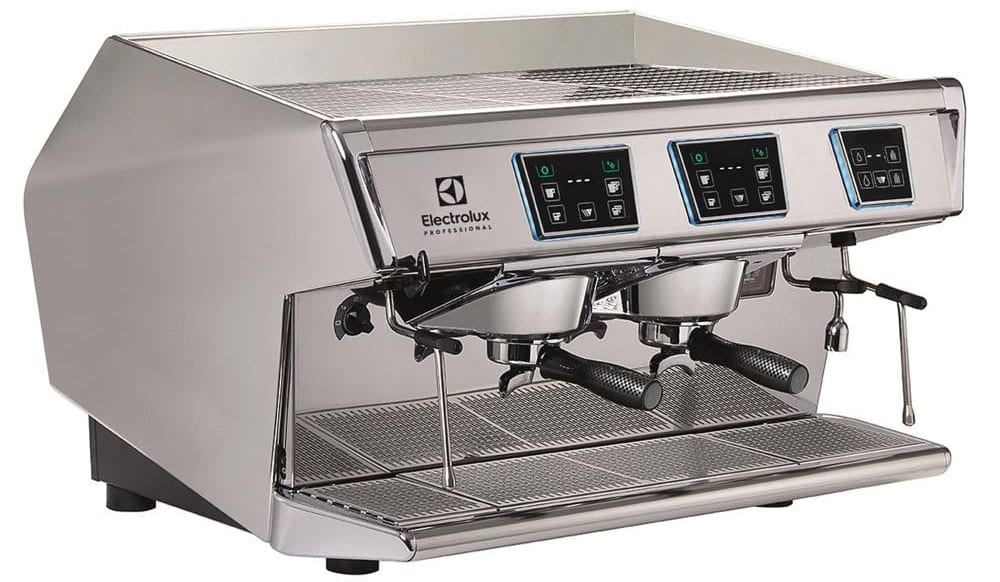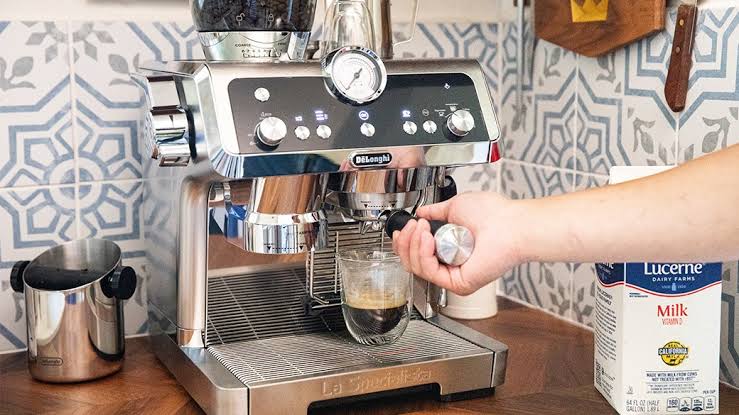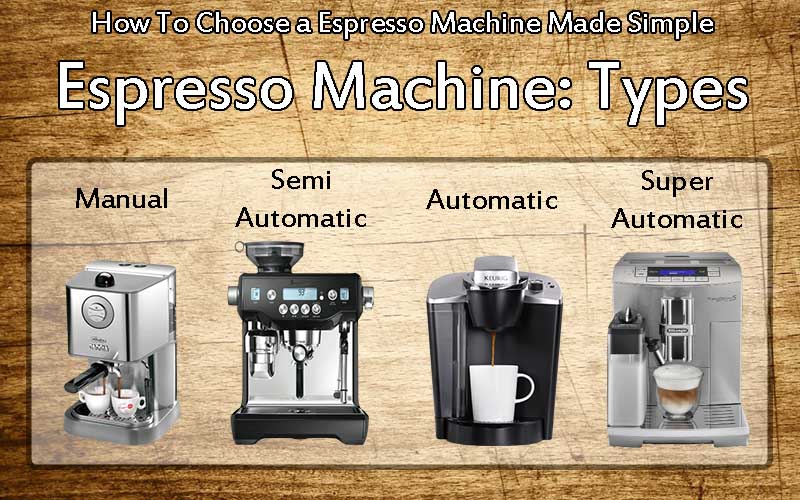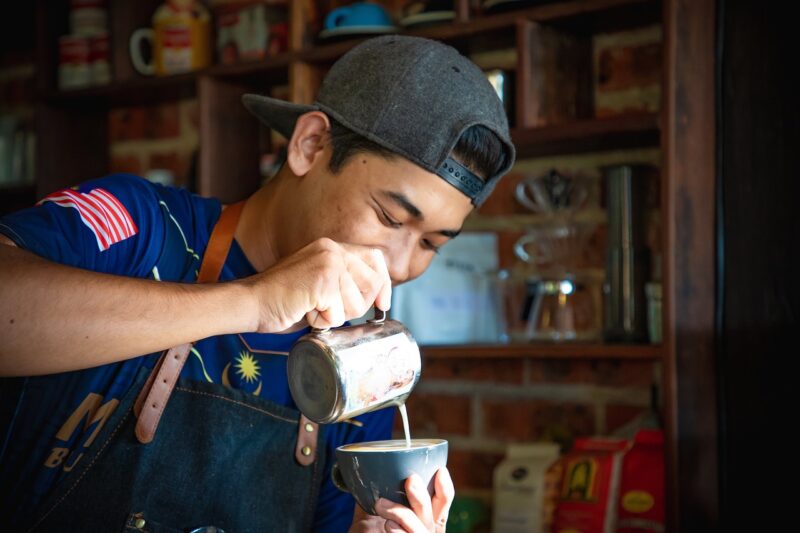How to use an Expresso Machine like a Professional!
Ah, the enticing aroma of freshly brewed espresso – a sensory delight that beckons coffee enthusiasts and connoisseurs alike. While grabbing your daily caffeine fix from the local café is convenient, there’s a certain allure in crafting your own perfect cup of espresso right at home. If you’re ready to elevate your coffee game and embark on a journey towards becoming an espresso aficionado, you’ve come to the right place.
In this guide, we will unravel the mysteries of using an espresso machine like a true professional. Whether you’re a novice seeking to demystify the complexities of espresso-making or an experienced coffee lover aiming to refine your technique, our step-by-step instructions and insider tips will empower you to harness the full potential of your espresso machine.

The espresso machine – that marvel of engineering – is both an art and a science. From selecting the finest beans to achieving the perfect extraction, every element plays a crucial role in the creation of an exceptional shot of espresso. While the journey might seem, a tad intimidating at first, fear not! With patience, practice, and a dash of passion, you’ll soon be orchestrating espresso symphonies that rival those of the seasoned baristas.
Throughout this guide, we will cover:
- Understanding Your Machine: An exploration of the various types of espresso machines, their components, and how they work. Whether you have a semi-automatic, automatic, or manual machine, understanding its intricacies is the foundation of mastering your craft.
- Choosing the Right Beans: Delving into the world of coffee beans – their origins, roast levels, and flavour profiles. We’ll guide you in selecting beans that align with your palate preferences and brewing method.
- Grinding to Perfection: The role of grind size in espresso extraction cannot be overstated. Discover the importance of a consistent grind and how to adjust it to achieve the desired shot characteristics.
- Tamping Technique: Learn the art of tamping, a critical step in ensuring even extraction. We’ll cover the right pressure, tools, and methods to tamp like a seasoned barista.
- Extraction Mastery: Unravel the mysteries of extraction time and volume. Discover how to pull the perfect shot – the holy grail of espresso making – with a harmonious balance of flavors and aromas.
- Steaming Milk to Silky Smoothness: If your espresso adventures extend to lattes, cappuccinos, and macchiatos, mastering milk steaming is paramount. We’ll guide you through achieving that velvety microfoam that crowns your espresso creations.
- Troubleshooting: Espresso making is a journey of experimentation, and bumps along the road are inevitable. Learn how to troubleshoot common issues and refine your technique over time.
- Advanced Techniques: For the ambitious and curious, we’ll touch on advanced topics like latte art, experimenting with brewing variables, and exploring unique espresso-based beverages.
As we journey through the realm of espresso mastery, remember that practice makes perfect. Each cup you create is an opportunity to refine your skills and deepen your understanding. So, whether you’re savoring your espresso solo or sharing it with friends and family, let the knowledge within these pages empower you to embrace the world of espresso making with confidence and joy.
Get ready to awaken your inner barista and transform your kitchen into a café where the aroma of freshly brewed espresso dances in the air – a place where every sip is a celebration of your dedication to the craft. Let’s dive in and unlock the secrets of using an espresso machine like a true professional!

Note There are Different types of Espresso Machines.
Espresso machines come in various types, each with its unique features and functionalities. The choice of the “better” machine depends on individual preferences, skill level, and specific needs. Here’s a brief overview of the different types and their differences:

- Manual Espresso Machines: These machines require the user to manually control every aspect of the brewing process, including water temperature, pressure, and timing. They offer the most hands-on and customizable experience, making them popular among experienced baristas. However, they have a steep learning curve and demand a deep understanding of espresso extraction principles.
- Semi-Automatic Espresso Machines: Semi-automatic machines automate the water pump and boiler temperature control, but the user has control over when to start and stop the espresso extraction. They strike a balance between manual control and convenience, allowing users to adjust grind size, tamp pressure, and shot length.
- Automatic Espresso Machines: Automatic machines handle most of the brewing process. They control water temperature, pressure, and shot length, making them user-friendly for beginners. Users typically need to grind and dose the coffee, but the machine takes care of the rest. This type is suitable for those who want a consistent shot without extensive manual control.
- Super-Automatic Espresso Machines: These machines are the most automated. They handle everything from grinding the beans to frothing milk. Users can often adjust settings like coffee strength and temperature. Super-automatic machines are perfect for those who value convenience above all else and want a one-touch solution for their espresso needs.
- Pod or Capsule Espresso Machines: These machines use pre-packaged coffee pods or capsules. They’re incredibly convenient, as they eliminate the need for grinding and dosing. However, they offer limited control over the coffee quality and customization options, making them suitable for those who prioritize speed and simplicity.
The “better” type of espresso machine generally depends on your goals:
- Novice and Convenience: If you’re new to espresso-making and prefer convenience, automatic or super-automatic machines might be your best bet. They offer consistent results with less manual effort.
- Intermediate and Control: If you want more control over your shots and are willing to invest time in learning, semi-automatic machines are great. They strike a balance between convenience and customization.
- Advanced and Craft: If you’re passionate about mastering the art of espresso and are willing to invest time in learning and experimentation, manual machines provide the most control and room for creativity.
Remember, the “better” machine also depends on your budget, available space, and how you plan to use the machine. Regardless of the type, a high-quality grinder is essential for achieving excellent espresso. The machine and grinder combination should be considered as a whole for optimal results.
Ultimately, the “best” espresso machine is the one that aligns with your preferences and allows you to create the espresso experience you desire – whether that’s a quick morning ritual, a hands-on hobby, or a pursuit of artisanal craftsmanship.
Step 1: Gather Your Materials.
Step 1:
One of the most important steps when learning how to use an expresso machine is simply to gather all of the necessary materials. You’ll need freshly roasted and ground coffee beans, filtered water, an espresso machine, an espresso tamper, a portafilter, and a shot glass or espresso cup. Make sure your espresso machine is plugged in and turned on before you start.
Grind Your Coffee Beans.
Step 2:
Next, you’ll need to grind your coffee beans. This too is an essential skill to grasp how to use an expresso machine. The grind size is essential when making espresso because it determines how fast the water flows through the coffee grounds. If the grind is too coarse, the water will flow too quickly, resulting in weak and watery espresso. If the grind is too fine, the water will not flow through the coffee grounds, resulting in a blocked filter and a burnt taste.
To achieve the perfect grind size, start by experimenting with different settings on your grinder. A good rule of thumb is to aim for a fine to medium-fine grind, similar to table salt. Once you’ve found the ideal grind size, measure out the appropriate amount of coffee for your espresso machine’s portafilter.
Tamp the Coffee.
Step 3: Tamp the Coffee
After you’ve measured out your coffee, it’s time to tamp it down into the portafilter. Tamping is the process of compressing the coffee grounds to ensure that the water flows evenly through them. Use an espresso tamper to press down firmly on the coffee grounds, making sure to distribute them evenly across the portafilter. The amount of pressure you apply when tamping is crucial. Too little pressure, and the water will flow too quickly, resulting in weak espresso. Too much pressure, and the water will not flow through the coffee grounds at all, resulting in a blocked filter.
Brew the Espresso.
Step 4: Brew the Espresso.
Now that your coffee is ground and tamped, it’s time to brew your espresso. Insert the portafilter into the espresso machine and lock it into place. If your machine has a pre-infusion setting, activate it to wet the coffee grounds and allow them to bloom before brewing. Then, turn on the espresso machine and wait for the water to heat up. Once the water reaches the optimal temperature, the espresso will start to pour into the shot glass or espresso cup.
The ideal espresso shot should take between 20 and 30 seconds to brew and should fill the shot glass or espresso cup to the appropriate level. If the shot takes too long to brew, the coffee will taste burnt, and if it’s too short, the espresso will be weak and sour.
Enjoy Your Espresso.
Step 5:
Congratulations, you’ve just brewed a perfect shot of espresso! Now it’s time to sit back, relax, and enjoy your delicious creation. If you want to take your espresso to the next level, you can experiment with adding steamed milk to make a latte or cappuccino.
Clean Your Espresso Machine.
Step 6: Clean Your Espresso Machine.
Cleaning a coffee machine is an essential step to maintain its functionality and a new barista needs to know how to use an expresso machine and clean it to ensure that it produces quality coffee. A coffee machine that is not cleaned regularly can lead to the accumulation of mineral deposits, mold, and bacteria, which can affect the taste of the coffee and even pose a health risk. In this post, we will discuss how to clean a coffee machine.
The first step is to turn off and unplug the machine to avoid any electrical hazards. Next, remove any remaining coffee grounds or filters. Then, using a damp cloth or sponge, wipe the exterior of the machine to remove any dirt or spills.
To clean the inside of the machine, mix equal parts of water and vinegar and pour it into the water reservoir. Turn on the machine and run a brewing cycle. Allow the mixture to sit in the machine for 15-20 minutes before running another brewing cycle with clean water to rinse out any remaining vinegar.
For the coffee carafe and filter basket, remove any remaining coffee grounds and wash them with warm, soapy water. If the carafe has stubborn stains or mineral deposits, soak it in a mixture of warm water and vinegar for about 30 minutes before washing it with soap and water.
It’s also important to clean the milk frother if your machine has one. To do this, remove the frothing wand and soak it in warm, soapy water for about 30 minutes. Rinse it thoroughly and wipe it dry before reattaching it to the machine.
In summary, cleaning a coffee machine involves wiping down the exterior, running a vinegar and water mixture through the machine, washing the carafe and filter basket, and cleaning the milk frother if applicable. By following these steps regularly, you can ensure that your coffee machine stays clean and produces quality coffee.
How to use an Espresso Machine & Store Your Beans.
If you’re a coffee lover, you probably know that the key to a great cup of coffee is using high-quality, freshly roasted beans. But did you know that how you store your beans can also have a big impact on their flavor?
Coffee beans are very sensitive to air, moisture, heat, and light. Exposure to any of these elements can cause the beans to degrade and lose their flavor over time. To keep your beans fresh and flavorful for as long as possible, it’s important to store them properly.
Here are some tips for storing your coffee beans: If your how to use an expresso machine the maintaining of your machine is so important to ensuring a great coffee.
- Keep them in an airtight container. Oxygen is one of the biggest enemies of coffee beans, so it’s important to keep them in an airtight container to minimize their exposure to air. Choose a container with a tight-fitting lid, such as a mason jar or a specially designed coffee storage container.
- Store them in a cool, dry place. Heat and moisture can also cause coffee beans to degrade, so it’s important to store them in a cool, dry place. Avoid storing them near the stove, oven, or any other heat source. The ideal temperature range for storing coffee beans is between 50-70°F.
- Keep them away from light. Exposure to light can cause coffee beans to become stale and lose their flavor. Store your beans in a dark cupboard or pantry, or choose a container that is opaque or tinted to block out light.
- Don’t freeze your beans. Contrary to popular belief, freezing coffee beans can actually be detrimental to their flavor. Freezing can cause the beans to absorb moisture and odors from the freezer, which can alter their taste. If you need to store your beans for an extended period of time, it’s better to store them in an airtight container at room temperature.
By following these simple tips, you can ensure that your coffee beans stay fresh and flavorful for longer, so you can enjoy a delicious cup of coffee every time. Happy brewing!
Author.
Brendon McAliece is a multi-lingual expat who brings over three decades of flight simulator/PC building experience as well as over two decades of real-world jet fighter experience as a weapons/egress technician. He holds a sport pilot certificate giving him real-world flying experience. Hi travels have taken him from Europe to the Middle East, Asia and his home of Australia. He has a passion for travel, languages, Flight simulation as well as Guitaring and Coffee. You can read more in his blogs below.

Learn more @
DreamingGuitar.com – DreamingCoffee.com – LetsFlyVFR.com
Home – Blog – Shop – About
As an Amazon affiliate I may earn on qualifying sales.















